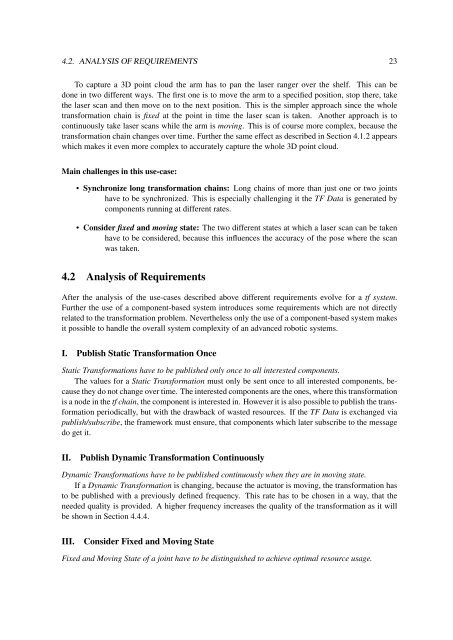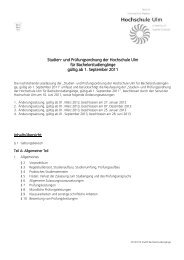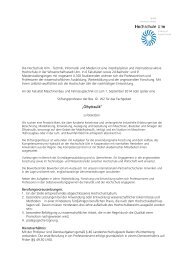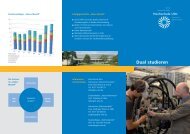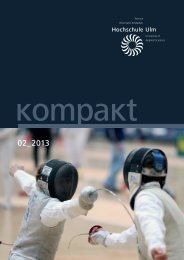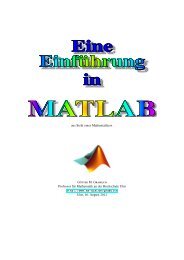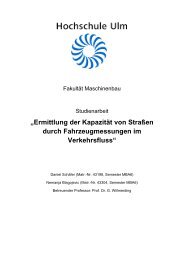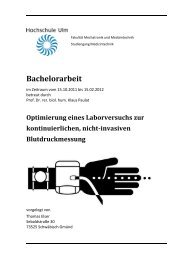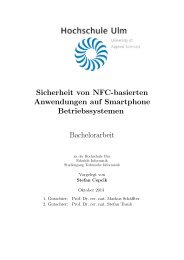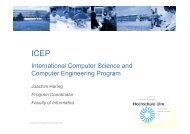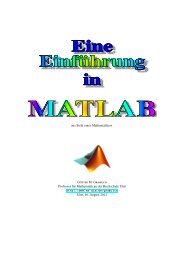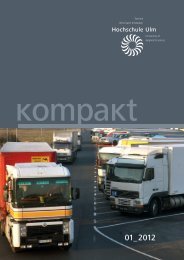PDF 1.938kB
PDF 1.938kB
PDF 1.938kB
Create successful ePaper yourself
Turn your PDF publications into a flip-book with our unique Google optimized e-Paper software.
4.2. ANALYSIS OF REQUIREMENTS 23<br />
To capture a 3D point cloud the arm has to pan the laser ranger over the shelf. This can be<br />
done in two different ways. The first one is to move the arm to a specified position, stop there, take<br />
the laser scan and then move on to the next position. This is the simpler approach since the whole<br />
transformation chain is fixed at the point in time the laser scan is taken. Another approach is to<br />
continuously take laser scans while the arm is moving. This is of course more complex, because the<br />
transformation chain changes over time. Further the same effect as described in Section 4.1.2 appears<br />
which makes it even more complex to accurately capture the whole 3D point cloud.<br />
Main challenges in this use-case:<br />
• Synchronize long transformation chains: Long chains of more than just one or two joints<br />
have to be synchronized. This is especially challenging it the TF Data is generated by<br />
components running at different rates.<br />
• Consider fixed and moving state: The two different states at which a laser scan can be taken<br />
have to be considered, because this influences the accuracy of the pose where the scan<br />
was taken.<br />
4.2 Analysis of Requirements<br />
After the analysis of the use-cases described above different requirements evolve for a tf system.<br />
Further the use of a component-based system introduces some requirements which are not directly<br />
related to the transformation problem. Nevertheless only the use of a component-based system makes<br />
it possible to handle the overall system complexity of an advanced robotic systems.<br />
I. Publish Static Transformation Once<br />
Static Transformations have to be published only once to all interested components.<br />
The values for a Static Transformation must only be sent once to all interested components, because<br />
they do not change over time. The interested components are the ones, where this transformation<br />
is a node in the tf chain, the component is interested in. However it is also possible to publish the transformation<br />
periodically, but with the drawback of wasted resources. If the TF Data is exchanged via<br />
publish/subscribe, the framework must ensure, that components which later subscribe to the message<br />
do get it.<br />
II.<br />
Publish Dynamic Transformation Continuously<br />
Dynamic Transformations have to be published continuously when they are in moving state.<br />
If a Dynamic Transformation is changing, because the actuator is moving, the transformation has<br />
to be published with a previously defined frequency. This rate has to be chosen in a way, that the<br />
needed quality is provided. A higher frequency increases the quality of the transformation as it will<br />
be shown in Section 4.4.4.<br />
III.<br />
Consider Fixed and Moving State<br />
Fixed and Moving State of a joint have to be distinguished to achieve optimal resource usage.


